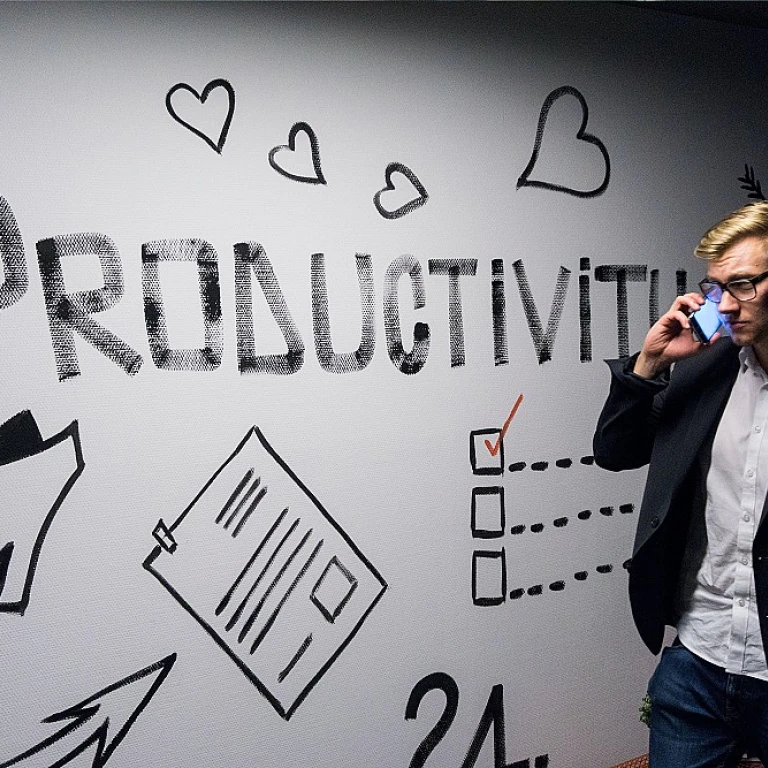Understanding Employee Engagement
The Core of Employee Engagement
Employee engagement is more than just a buzzword—it's a crucial component in the dynamics of successful workplaces. Understanding what truly constitutes employee engagement helps organizations develop strategies that not only ignite enthusiasm but also lead to significant improvements in overall performance.
At its heart, employee engagement involves creating meaningful experiences where employees feel a sense of belonging, purpose, and motivation. It encompasses the emotional commitment an employee has towards the organization and its objectives. Engaged employees are passionate and dedicated, which naturally translates to higher productivity and job satisfaction. This commitment is not merely about showing up for work; it is about going the extra mile to make a significant impact.
Factors Influencing Engagement
Numerous factors can influence the level of engagement employees feel within an organization. Leadership and management play a pivotal role. Leaders who communicate effectively, recognize efforts, and offer opportunities for growth create an environment where employees thrive. Additionally, a clear alignment of personal goals with the company’s mission fosters a strong connection, enhancing engagement levels.
Furthermore, understanding employee engagement involves recognizing the importance of inclusivity and diversity. A diverse workplace encourages creativity and innovation, leading to a more dynamic team that feels valued and respected, further fueling engagement.
Finally, an employee's relationship with their work peers and direct supervisors can significantly affect their engagement. A culture of collaboration and mutual respect creates an atmosphere where individuals feel supported and inspired to perform at their best.
Linking Engagement to Business Outcomes
Comprehending employee engagement is crucial as it is directly linked to various business outcomes. Engaged employees are more likely to stay with their company, reducing turnover rates and associated costs. They also contribute to a more robust customer satisfaction due to their positive attitudes and commitment to high-quality service.
To delve deeper into how human resources can drive these outcomes and understanding the strategic role HR plays in boosting employee engagement, explore our insights on how HR propels employee engagement to boost company success
here. This understanding lays the groundwork for creating systems that support and sustain a motivated and high-performing workforce.
The Ripple Effect of Employee Engagement on Performance
Engaged employees are often the lifeblood of a high-performing organization. When team members feel connected, motivated, and valued, their productivity levels tend to soar. This positive correlation between employee engagement and performance showcases the crucial role of maintaining an engaged workforce.
Engagement goes beyond mere job satisfaction. It is about creating an environment where employees are passionate about their work and committed to the company's goals. As a result, these individuals often exhibit remarkable drive and determination, which directly contribute to enhancement in quality, efficiency, and innovation.
A study from a variety of workplaces has shown that engaged employees are more likely to go the extra mile, deliver better service, and improve customer satisfaction. These factors inevitably lead to a stronger bottom line and enable an organization to outperform competitors. Furthermore, engaged employees contribute to a more cohesive team dynamic, whereby collaboration and knowledge sharing become second nature.
To understand this phenomenon better, you can explore
boosting productivity through employee engagement as it sheds light on how engagement strategies feed into enhanced performance metrics.
The commitment and enthusiasm of engaged employees also lead to greater resilience in the face of challenges. Organizations filled with engaged individuals tend to recover more swiftly from setbacks and maintain a steady focus on long-term objectives. This ability to adapt indicates the sustainable strength that emerges from prioritizing employee engagement as a strategic focus.
As this section highlights the immense impact of engaged employees, it's important to recognize the role of creating a positive work environment. The subsequent section will delve into how such an environment fosters and sustains engagement levels, ensuring that employee motivation and productivity remain at peak levels.
Creating a Positive Work Environment
Fostering a Supportive Workplace Culture
Creating an environment where employees feel valued and supported is crucial in elevating their engagement levels. A supportive workplace culture acts as the backbone for strong employee morale and heightened performance, which we explored earlier in the impact of employee engagement on performance. It's about weaving a network of support that encompasses emotional well-being, work-life balance, and recognition of efforts.
Leaders and managers play a pivotal role in shaping this environment. By demonstrating empathy, open communication, and inclusivity, they set a tone that resonates throughout the organization. This encourages employees to feel safe, express their ideas, and contribute more effectively to the company's goals.
Moreover, a positive and inclusive work environment addresses the diverse needs of the workforce. Personal development opportunities, flexible work arrangements, and mentorship programs can significantly enhance employee satisfaction and commitment. Implementing innovative employee engagement programs can further motivate staff, making them feel integral to the organization's success.
To explore more on how innovative programs can elevate employee engagement,
visit this insightful article. These programs not only stimulate engagement but also foster a culture that thrives on enthusiasm and collaboration.
In summary, a positive work environment is an ongoing effort that requires deliberate actions from leadership and a commitment to nurturing a culture of respect, recognition, and support. It's a crucial step in the broader framework of boosting employee engagement for stellar performance.
The Power of Constructive Feedback
Feedback is a cornerstone of employee engagement and a pivotal driver of performance. When executed effectively, it fosters a culture of openness and continuous improvement, leading to better results and enhanced job satisfaction. Engaged employees are more receptive to feedback, using it as a valuable tool for growth and innovation.
A well-structured feedback process allows employees to understand how their work contributes to overall business goals, tying into the benefits of engagement discussed earlier. Regular feedback, both positive and constructive, helps employees align their efforts with company objectives, ensuring everyone moves in the same direction.
Performance Management as an Engagement Tool
Performance management systems, when designed thoughtfully, can significantly boost employee engagement. This isn't just about annual reviews but involves ongoing communication, goal setting, and recognition. When employees have clear objectives and regular check-ins with management, they are more likely to feel valued and engaged.
Moreover, using performance management as a platform to celebrate achievements and address areas for improvement can help to maintain high motivation levels. Engaged employees are those who see their performance being valued and their contributions recognized regularly. This ongoing engagement is essential for sustaining high performance.
Implementing a Culture of Continuous Improvement
Creating a culture of continuous feedback and improvement requires commitment from all levels of the organization. It goes beyond formal performance reviews and involves encouraging open lines of communication, where feedback flows freely and constructively. Leaders should be trained to deliver feedback in ways that are supportive and motivating.
Organizations striving for this type of culture will find that regular performance discussions naturally align with the broader goals of improving engagement and achieving stellar performance outcomes. In essence, feedback and performance management become essential pillars that support and enhance the overarching strategy of boosting employee engagement and performance." }
Overcoming Challenges with Disengaged Employees
Addressing Disengagement in the Workplace
In many organizations, employee disengagement can be a significant hurdle to achieving optimal performance. While efforts to foster employee engagement are crucial, understanding and addressing the root causes of disengagement is equally important. Disengaged employees often exhibit lower productivity, reduced morale, and a higher likelihood of turnover, all of which can negatively impact a company's performance.
The first step in overcoming challenges with disengaged employees is identifying the reasons behind their lack of enthusiasm. Factors such as a lack of recognition, insufficient growth opportunities, and a disconnect between employees' roles and the organization's mission can all contribute to disengagement. Recognizing these issues allows leaders to create targeted strategies to re-engage their workforce.
Effective communication plays a pivotal role in this process. By fostering open dialogue between management and employees, organizations can better understand employee concerns and work collaboratively toward solutions. Regular feedback sessions can provide a platform for employees to voice their opinions and for leaders to share their visions, further strengthening the relationship between both parties.
Moreover, aligning performance management systems with employee expectations and organizational goals can aid in bridging the gap between disengaged employees and their potential for stellar performance. By setting clear goals and providing consistent feedback, employees gain a clearer understanding of their contributions to the company's success, which can reignite their motivation and commitment.
Finally, it's essential to tailor solutions to individual needs, acknowledging that each employee possesses unique motivations and challenges. From personal development plans to tailored recognition programs, personalized approaches can significantly enhance engagement levels, ultimately leading to better performance outcomes. By addressing these challenges head-on, organizations can transform disengaged employees into productive, committed team members, paving the way for a more successful future.
The Future of Employee Engagement
The Journey Ahead: Employee Engagement in the Modern Workforce
As we look to the future, the world of employee engagement is poised for transformation, driven by evolving technologies, changing workforce demographics, and shifting organizational cultures. The future of employee engagement will no longer be a singular concept, but a dynamic, multifaceted strategy requiring a continuous commitment from both employers and employees.
The rise of digital tools and platforms will continue to play a pivotal role. Organizations will increasingly leverage technology to foster connectedness, streamline processes, and facilitate real-time feedback systems. As mentioned previously, feedback and performance management are crucial components of engagement, and tech innovations can further enhance these by providing more personalized and timely insights into employee development.
Another key trend shaping the future is the increasing emphasis on inclusivity and diversity within the workplace. Diverse teams are known to bring a range of perspectives and ideas, which can enhance innovation and problem-solving. Creating a positive work environment that celebrates these differences can boost morale and foster deeper engagement, leading to improved team performance overall.
Moreover, there's a heightened focus on well-being and mental health. The modern workforce values employers who prioritize holistic well-being, recognizing that engaged employees are not just productive workers, but healthier individuals. Companies will need to implement comprehensive wellness programs featuring mental health support, flexible work schedules, and opportunities for professional development to remain competitive in this regard.
Finally, overcoming challenges associated with disengaged employees will remain a significant focus. By understanding the core reasons for disengagement, companies can develop more targeted solutions to re-engage their workforce. This could involve redesigning job roles to better align with employee strengths or offering more personalized career development paths.
In conclusion, the future of employee engagement will require adaptability, innovation, and resilience. Businesses that embrace these changes and are proactive in crafting a supportive and engaging workplace culture will not only enhance their employees' experience but also drive stellar performance and success for their organizations.












